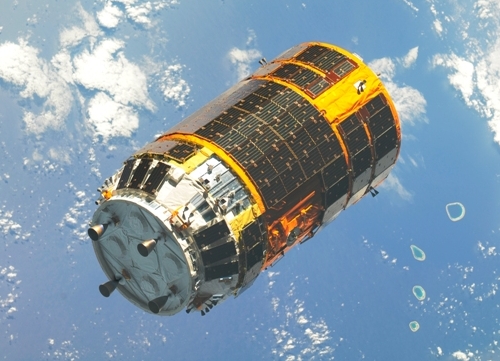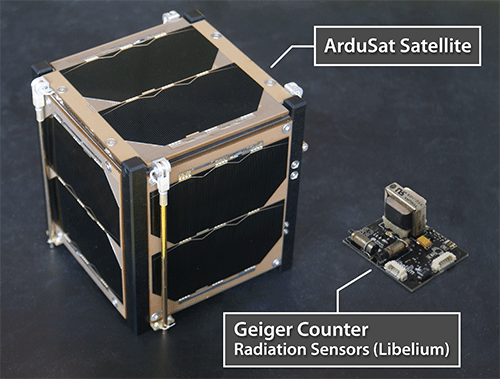Home / Casos de Éxito / Los sensores Libelium se lanzan al espacio en el primer satélite de código abierto
 Una vez que el ArduSat se ponga en órbita desde la carga HTV-4 (imagen superior) a una altitud de más de 300 km, estudiantes de una docena de escuelas de todo Estados Unidos y de escuelas selectas de Brasil, Guatemala, India, Indonesia e Israel accederán a los satélites y los controlarán para sus experimentos científicos, a partir de este otoño. Uno de los seis experimentos preconstruidos utiliza el Contador Geiger Libelium para detectar niveles de radiación de alta energía procedentes del espacio.
"Nuestros sensores de radiación se desarrollaron originalmente para medir los niveles de radiactividad en la Tierra. Los adaptamos para cumplir las restricciones del satélite en cuanto a peso, tamaño y control de potencia, en una bonita colaboración entre Libelium y los equipos de ingeniería de ArduSat", ha declarado David Gascón, cofundador y CTO de Libelium.
Una vez que el ArduSat se ponga en órbita desde la carga HTV-4 (imagen superior) a una altitud de más de 300 km, estudiantes de una docena de escuelas de todo Estados Unidos y de escuelas selectas de Brasil, Guatemala, India, Indonesia e Israel accederán a los satélites y los controlarán para sus experimentos científicos, a partir de este otoño. Uno de los seis experimentos preconstruidos utiliza el Contador Geiger Libelium para detectar niveles de radiación de alta energía procedentes del espacio.
"Nuestros sensores de radiación se desarrollaron originalmente para medir los niveles de radiactividad en la Tierra. Los adaptamos para cumplir las restricciones del satélite en cuanto a peso, tamaño y control de potencia, en una bonita colaboración entre Libelium y los equipos de ingeniería de ArduSat", ha declarado David Gascón, cofundador y CTO de Libelium.
 "Estamos haciendo que la exploración espacial sea asequible y accesible para todos, con una plataforma espacial que permite a los usuarios innovar. El espíritu de descubrimiento y puesta en común que inspira el desarrollo de código abierto encaja perfectamente con este objetivo y hace que cobre vida", afirma Peter Platzer, consejero delegado de NanoSatisfi, empresa matriz de ArduSat.
Los experimentos preconstruidos de ArduSat incluyen:
"Estamos haciendo que la exploración espacial sea asequible y accesible para todos, con una plataforma espacial que permite a los usuarios innovar. El espíritu de descubrimiento y puesta en común que inspira el desarrollo de código abierto encaja perfectamente con este objetivo y hace que cobre vida", afirma Peter Platzer, consejero delegado de NanoSatisfi, empresa matriz de ArduSat.
Los experimentos preconstruidos de ArduSat incluyen: